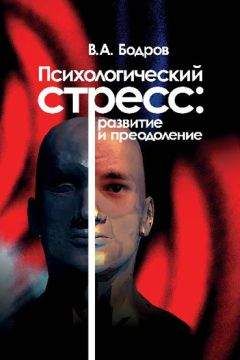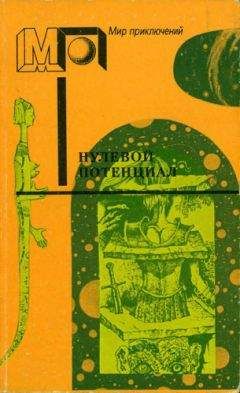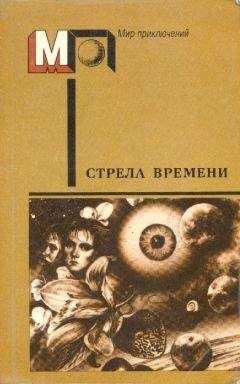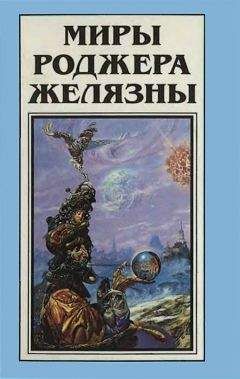Ознакомительная версия.
485. Tomporowsky P.D., Ellis N.R. Effects of exercise on cognitive processes: Review // Psychological Bulletin. 1986. Vol. 99. P. 338–346.
486. Turner R.J., Roszell P. Psychological resources and the stress process // Stress and mental health: Contemporary issues and prospects for the future / Ed. by W.R. Avison, J.H. Gotlib. New York: Plenum Press, 1994. P. 179–209.
487. Ursano R.J., Wheatly R., Sledge W., Rahe A., Carlson E. Coping and recovery styles in the Vietnam era prisoner of war // J. of Nervous and Mental Disease. 1986. Vol. 75. P. 273–275.
488. Vaillant G. Adaptation to life: How the best and the brightest came of age. Boston: Little Brown, 1972.
489. Vaillant G.E. The nature of alcoholism. Cambridge: Harvard University press, 1983.
490. Vaillant G.E. The wisdom of the ego. Cambridge: Harvard University Press, 1993.
491. Vaillant G.E., Bond M., Vaillant C.O. An empirically validated hierarchy of defense mechanisms // Archives of General Psychiatry. 1986. Vol. 43. P. 786–794.
492. Vitaliano P.O., Maiuro R.D., Russo J., Katon W., De Wolfe D., Hall G. Coping profiles associated with psychiatric, physical health, work and family problems // Health Psychology. 1990. Vol. 9. P. 348–376.
493. Vitaliano P., Russo J., Carr J., Maiuro R., Becker J. The ways of coping checklist: Revision and psychometric properties // Multivariate Behavioral Research. 1985. Vol. 20. P. 3—26.
494. Vitaliano P.O., DeWolfe D.J., Maiuro R.D., Russo J., Katon W. Appraisal changeability of a stressor as a modifier of the relationship between coping and depression: A test of the hypothesis of fit // J. of Personality and Social Psychology. 1990. Vol. 59. P. 582–592.
495. Wallace R.K., Benson H. The physiology of meditation // Scientific American. 1972. Vol. 226. P. 84–90.
496. Weber H. Belastungs verarbeitung // Z. fur Klinische Psychologic. 1992. B. 21. N 1. P. 17–27.
497. Wenger M.A., Pagchi B.K. Studies of autonomic function in practitioners of Yoga in India // Behavioral Science. 1961. Vol. 6. P. 312–323.
498. Whitbourne S.K. The psyhological construction of the lifespan // Handbook of the psychology of aging / Ed. by J.E. Birren, K.W. Schail. 2nd en. New York: Van Nostrand, 1985. P. 594–618.
499. White R.W. Strategies of adaptation: An attempt at systematic description // Coping and adaptation / Ed. by G.V. Coelho, D.A. Hamburg, J.E. Adams. New York: Basic Books, 1974. P. 47–68.
500. Wierwill W.W., Connor S.A. Evolution of 20 workload measures using a psychomotor task in a moving-base aircraft simulator // Human Factors. 1983. Vol. 25. P. 1—16.
501. Williges R.S., Wierwill W.W. Behavioral measures of aircrew mental workload // Human Factors. 1979. Vol. 21. P. 49—674.
502. Winfield J. Counseling with biofeedback: A review // British J. of Guidance and Counseling. 1983. Vol. 11. P. 46–51.
503. Wolff H.G. Stress and decease. 2nd ed. Springfield: Charles C. Tomas, 1968.
504. Wolin S.J., Wolin S. The resilient self: How survivors of troubled families rise above adversity. New York: Ullard Books, 1993.
505. Wolpe J. Psychotherapy by reciprocal inhibition. Stanford: Stanford University Press, 1958.
506. Wong P.T. Personal meaning and successful aging // Canadian Psychology. 1989. Vol. 30 (3). P. 216–255.
507. Wong P.T. The psychology of control (Special issue) // Canadian J. of Behavior Science. 1992. Vol. 24 (2). P. 93–96.
508. Wong P.T. Effective management of life stress: The resource-congruence model // Stress Medicine. 1993. Vol. 9. P. 51–60.
509. Wong P.T., Reker G.T., Peacock E.J. The revised coping inventory. Unpublished manuscript. Trent University, 1987.
510. Wortman C.B., Silver R.C. The myths of coping with loss // J. of Consulting and Clinical psychology. 1989. Vol. 57. P. 349–357.
511. Wyman P.A., Cowen E.L., Work W.C., Parker G.R. Developmental and family milieu correlates of resilience in urban children who have experienced major life stress // American J. of Community Psychology. 1991. Vol. 19. P. 405–426.
512. Zeinder M., Hammer A. Life events and coping resources as predictors of stress symptoms the adolescent // Personal Individual Difference. 1990. Vol. 11, N 7. P. 693–703.
513. Zullow H.M., Oettingen G., Peterson C., Seligman M.E.F. Pessimistic explanatory style in the historical record / American Psychologist. 1988. Vol. 43. P. 637–682.
Инсайт (англ. insight – проникновение, проницательность, постижение, озарение) – внезапное, логически выводимое понимание сущности явления ситуации в целом, решение проблемы.
«Оно» (Id) – биологические влечения, требующие непосредственного удовлетворения, которые блокируются инстанцией «Сверх-Я» (SuperEgo) – «цензорным» компонентом личности. «Сверх-Я» складывается из интериоризированных в ходе социализации индивида социальных нормативов и ценностей. Конфликт между несовместимыми требованиями «Оно» и «Сверх-Я» разрешается инстанцией «Я», функция которой состоит в приспособлении человека к реальности посредством выработки механизмов защиты: вытеснения, проекции, регрессии, сублимации [233].
Сублимация (в психоанализе) – один из механизмов психической защиты, снимающий напряжение в ситуации конфликта путем трансформации его в формы, более приемлемые для индивида [179].
Сенсибилизация – повышение чувствительности.
Под «системой» понимается совокупность взаимосвязанных, взаимодействующих элементарных структур или процессов, объединенных в целое выполнением некоторой общей функции, которую не может осуществить ни один из ее компонентов в отдельности [17].
В разделе использованы материалы из работы Т.Л. Руденко «Физиотерапия» [188].
В разделе использованы материалы из работы Г.Н. Пономаренко и М.Г. Воробьева «Современная домашняя физиотерапия» [176].
Йога (санскр., буквально – связь, единение, сосредоточение, усилие) – учение и метод духовного и физического совершенствования человека.
Сутра (санскр., буквально – нить), лаконичное высказывание; позднее – свод таких высказываний. Язык сутры характеризуется образностью и афористичностью.
Термин «сенсибилизация» в наиболее общем виде означает повышение чувствительности к воздействию каких-то определенных раздражителей. Сенсибилизация может проявляться не только на уровне рецепторов или отдельных анализаторов, но и на психическом и поведенческом уровне. Гипосенсибилизация при аутогенной тренировке направлена на ликвидацию или ослабление чувствительности к психотравмирующим воздействиям.
Ознакомительная версия.





